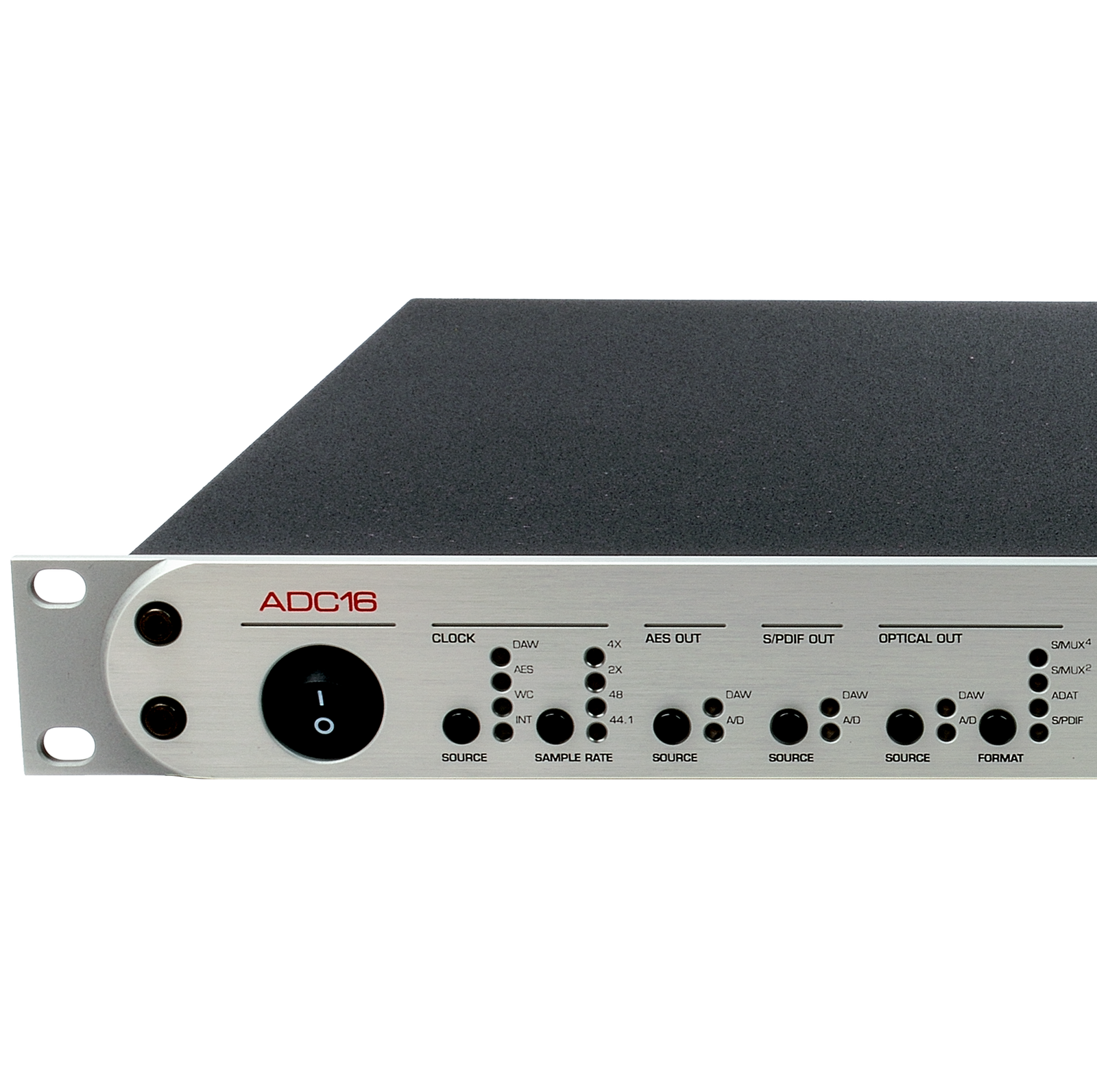Buy 2 components and get 4 free cables. Free shipping on all orders over $700.
UltraLockDDS™ Clock System
by John Siau November 01, 2010

New Clock Technology from Benchmark
When Benchmark unveiled UltraLock™, it caused quite a stir. Benchmark claimed that this proprietary clock-syncing system made their converters immune to jitter. UltraLock™ keeps jitter-induced distortion at or below -135 dB FS (well below audibility). Of course, the audio community was skeptical; they set out to prove (or disprove) Benchmark’s claims. Since then, several journalists, end-users, and manufacturers of audio test-equipment have verified Benchmark’s claim of jitter-immunity.
However, there was still room for improvement. There is an asynchronous sample rate conversion (ASRC) process in UltraLock™ that adds about 1 millisecond of latency. This latency is usually only of concern when musicians are monitoring themselves real-time, post-converter. Even in this case, 1 millisecond of latency is hardly noticeable; it is roughly equivalent to having the instrument 1 foot further away. Nevertheless, it can contribute to a system-wide latency problem.
When designing the ADC16, Benchmark decided to revisit its clock-management solution, to reduce latency. The technology that Benchmark developed during this quest is called UltraLockDDS™.
Benchmark’s new UltraLockDDS™ clock system utilizes the latest low-jitter clock technology developed for high-frequency RF communications systems. The master oscillator is a low phase-noise, temperature-compensated, fixed-frequency crystal oscillator with a +/- 2 PPM frequency accuracy. This oscillator drives a 500 MHz Direct Digital Synthesis (DDS) system that generates a 3072 x WC system clock. This high-frequency clock is divided and distributed directly to the A/D converters using a high-speed PECL clock distribution chip. Each of the 8 converters is driven directly through a dedicated, matched-impedance transmission line.
Jitter attenuation is achieved with digital filters in a custom FPGA that controls the DDS system. All jitter-induced distortion artifacts are well below audibility under all operating conditions. Jitter-induced distortion is always at least 135 dB below the level of the music. The jitter-performance of UltraLockDDS™ meets or exceeds the performance of Benchmark’s UltraLock™ system, but does not use an ASRC DSP process. The elimination of the ASRC processing significantly reduces system lateancy and provides the most direct path from the A/D to the digital interface.
Also in Audio Application Notes

Audiophile Snake Oil
by John Siau April 05, 2024
The Audiophile Wild West
Audiophiles live in the wild west. $495 will buy an "audiophile fuse" to replace the $1 generic fuse that came in your audio amplifier. $10,000 will buy a set of "audiophile speaker cables" to replace the $20 wires you purchased at the local hardware store. We are told that these $10,000 cables can be improved if we add a set of $300 "cable elevators" to dampen vibrations. You didn't even know that you needed elevators! And let's not forget to budget at least $200 for each of the "isolation platforms" we will need under our electronic components. Furthermore, it seems that any so-called "audiophile power cord" that costs less than $100, does not belong in a high-end system. And, if cost is no object, there are premium versions of each that can be purchased by the most discerning customers. A top-of-the line power cord could run $5000. One magazine claims that "the majority of listeners were able to hear the difference between a $5 power cable and a $5,000 power cord". Can you hear the difference? If not, are you really an audiophile?

Making Sound with Plasma - Hill Plasmatronics Tweeter
by John Siau June 06, 2023
At the 2023 AXPONA show in Chicago, I had the opportunity to see and hear the Hill Plasmatronics tweeter. I also had the great pleasure of meeting Dr. Alan Hill, the physicist who invented this unique device.
The plasma driver has no moving parts and no diaphragm. Sound is emitted directly from the thermal expansion and contraction of an electrically sustained plasma. The plasma is generated within a stream of helium gas. In the demonstration, there was a large helium tank on the floor with a sufficient supply for several hours of listening.

While a tank of helium, tubing, high voltage power supplies, and the smell of smoke may not be appropriate for every living room, this was absolutely the best thing I experienced at the show!
- John Siau

Audio Calculators
by John Siau June 04, 2023
We have added an "Audio Calculators" section to our webpage. Click "Calculators" on the top menu to see more like these:

